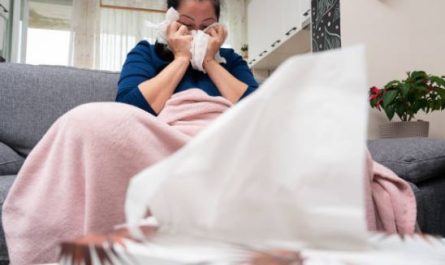There are several types of pneumonia, which can be classified based on the cause of the infection or the location where the infection was acquired. Here are some common types of pneumonia.
Community-Acquired Pneumonia (CAP)
This is the most common type of pneumonia and refers to the infection acquired outside of a healthcare setting. It can be caused by bacteria, viruses, or fungi.
Hospital-Acquired Pneumonia (HAP)
This type of pneumonia occurs during a hospital stay and is typically associated with more resistant bacteria. It usually affects people who are already hospitalized, especially those on ventilators or with weakened immune systems.
Ventilator-Associated Pneumonia (VAP)
VAP is a type of pneumonia that develops in people who are on mechanical ventilation. It occurs when bacteria from the mouth, throat, or the environment enter the lungs through the breathing tube.
Aspiration Pneumonia
This type of pneumonia occurs when foreign substances, such as food, liquids, or vomit, are inhaled into the lungs. Aspiration pneumonia can be caused by problems with swallowing, impaired consciousness, or a weakened gag reflex.
Viral Pneumonia
Viral infections, particularly influenza (flu) and respiratory syncytial virus (RSV), can lead to viral pneumonia. These types of pneumonia can range from mild to severe, depending on the specific virus and the individual’s immune response.
Bacterial Pneumonia
Bacterial pneumonia is caused by various types of bacteria, with Streptococcus pneumoniae being the most common. Bacterial pneumonia can range from mild to severe and often requires treatment with antibiotics.
Mycoplasma Pneumonia
Mycoplasma pneumonia is caused by the bacteria Mycoplasma pneumoniae. It typically affects young adults and is known for causing milder symptoms compared to other types of pneumonia.
Fungal Pneumonia
Fungal pneumonia is caused by fungi, such as Candida or Aspergillus. It primarily affects individuals with weakened immune systems, such as those with HIV/AIDS or undergoing chemotherapy.
It’s important to note that pneumonia can have overlapping characteristics and that the specific type of pneumonia may require different treatments. A healthcare professional will assess the individual’s symptoms, medical history, and may perform diagnostic tests to determine the most appropriate treatment approach.
What is Pneumonia?
Pneumonia is an infection that inflames the air sacs in one or both lungs. It can be caused by bacteria, viruses, fungi, or, less commonly, parasites. Pneumonia can range from mild to severe and can affect people of all ages, but it is most common among the very young, the elderly, and those with weakened immune systems.
When a person develops pneumonia, the air sacs in the lungs become filled with fluid or pus, making it difficult to breathe and leading to symptoms such as:
Cough
Pneumonia is often accompanied by a persistent cough that may produce phlegm or mucus. The color and consistency of the phlegm can vary depending on the cause of the infection.
Fever
A high body temperature is a common symptom of pneumonia. The fever may be accompanied by chills and sweating.
Shortness of Breath
As the infection affects the lungs, it can cause difficulty breathing, rapid breathing, or shortness of breath, especially during physical exertion.
Chest Pain
Some individuals with pneumonia may experience chest pain, which can range from a mild discomfort to sharp and stabbing pain. The pain may worsen with deep breathing or coughing.
Fatigue
Pneumonia can cause extreme tiredness, weakness, and a general feeling of fatigue. This can be due to the body’s immune response to fighting the infection.
Other symptoms
Depending on the cause and severity of the pneumonia, additional symptoms may include headache, muscle aches, sore throat, nausea, and vomiting.
Pneumonia can be diagnosed through a combination of medical history, physical examination, and diagnostic tests such as chest X-rays, blood tests, or sputum cultures. Treatment typically involves appropriate medications, such as antibiotics for bacterial pneumonia or antiviral medications for viral pneumonia, along with supportive care to relieve symptoms and aid in recovery.
It’s important to seek medical attention if pneumonia is suspected, especially in individuals who are very young, elderly, or have underlying health conditions, as prompt diagnosis and treatment can help prevent complications and promote recovery.
Common Treatment for Pneumonia
The treatment for pneumonia depends on the type and severity of the infection, as well as the overall health condition of the individual. In general, the common treatments for pneumonia include:
Antibiotics
If the pneumonia is bacterial in nature, antibiotics are usually prescribed to kill the bacteria causing the infection. The choice of antibiotics will depend on the specific type of bacteria and other factors such as the individual’s age, underlying health conditions, and any known antibiotic resistance patterns.
Antiviral Medications
For viral pneumonia, antiviral medications may be prescribed if the specific virus causing the infection can be identified. However, antiviral medications are not effective against all types of viral pneumonia, and treatment primarily focuses on relieving symptoms and supporting the immune system.
Antifungal Medications
If the pneumonia is caused by a fungal infection, antifungal medications may be prescribed. Fungal pneumonia typically occurs in individuals with weakened immune systems, so treatment may also involve addressing the underlying immune deficiency.
Fever and Pain Medications
Over-the-counter or prescription medications such as acetaminophen or nonsteroidal anti-inflammatory drugs (NSAIDs) may be recommended to reduce fever, alleviate pain, and relieve discomfort associated with pneumonia.
Cough Suppressants or Expectorants
Depending on the type of cough and associated symptoms, healthcare providers may suggest cough suppressants to reduce excessive coughing or expectorants to help loosen and expel mucus from the lungs.
Oxygen Therapy
In severe cases of pneumonia where oxygen levels are low, supplemental oxygen may be provided to ensure adequate oxygenation of the body.
Supportive Care
Rest, proper hydration, and maintaining a healthy diet are essential for recovery from pneumonia. It’s important to follow healthcare provider instructions and get plenty of rest to allow the body to heal.
It’s crucial for individuals with pneumonia to seek medical attention and receive proper treatment. The specific treatment plan should be determined by a healthcare professional based on a thorough evaluation of the individual’s condition.



